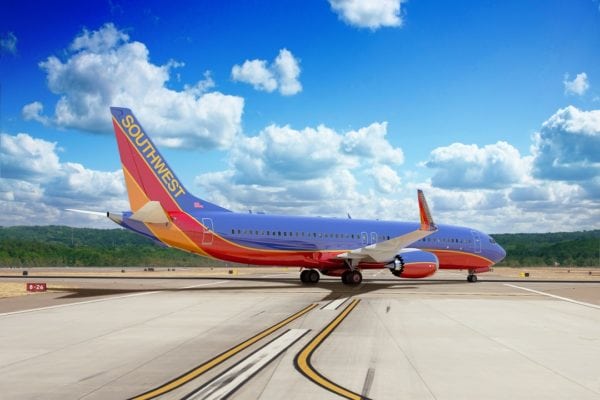
Southwest Airlines is a launch customer for the new Boeing 737 Max. Photo courtesy of Southwest Airlines.
Here are the top 10 Avionics articles from our August coverage of the latest industry news:
Southwest Airlines was set to get its first Boeing 737 Max 8 last month under an accelerated fleet modernization plan that calls for the carrier to begin operations of that next-generation Boeing narrow body by Oct. 1 and retire its last “classic” 737s before then.
Qantas Airways CEO Alan Joyce issued a challenge to Airbus and Boeing during the Australian carrier’s 2017 earnings call — build a commercial airplane capable of flying from Melbourne to New York nonstop with a full payload.
According to an internal company news memorandum obtained by Avionics, Boeing is launching a new business unit that will focus on development and production of avionics technology.
Those who work within the various segments of the global aerospace industry know the importance of staying up to date on new technologies, procedures and concepts on the horizon. We compiled a list of 10 different avionics technologies and concepts being researched right now.
A U.S. Army memorandum has directed the stoppage of use of all DJI (Dà-Jiāng Innovations) unmanned aircraft system (UAS) technology within the service, sUAS News reported.The memo, as reported by sUAS News, requires Army personnel to “uninstall all DJI applications, remove all batteries/storage media from devices and secure equipment for follow-on direction.”
The Experimental Aircraft Assn.’s (EAA) annual AirVenture air show features some of the world’s most advanced, futuristic and obscure aircraft and technologies in the aviation industry. 2017 was no different, with several manufacturers unveiling new autopilots, low-cost ADS-B hardware and new flying cars, among other things.
Research, operation and future considerations for augmented reality technologies have been expanding throughout the global aviation industry over the past decade, though published exploration of A/R can be traced back as far as the 1990s. We highlight some of the ways in which different areas of the aviation industry are using and evaluating future use cases for augmented and virtual reality technologies.
General aviation airplane shipments reached a total of $9 billion during the first six months of 2017, according to a new report published by the General Aviation Manufacturers Association (GAMA). OEMs delivered a total of 995 business jets, piston aircraft and turboprops between January and June, the report says.
According to a report published by The Wall Street Journal Tuesday, United Technologies Corp. (UTC) is moving closer to a potential acquisition of Rockwell Collins. The report notes that UTC is “nearing a deal” to purchase Rockwell Collins for more than $20 billion.
With Boeing projecting demand for 41,000 new commercial aircraft and 617,000 pilots over the next 20 years, traditional manned commercial airliners and business and general aviation aircraft will continue to dominate the skies in the near future. However, during the 2017 Paris Air Show, and really over the last year, several companies, including Airbus and Boeing have revealed new aerial flying concepts designed to give drivers in congested cities new options for getting to work, transporting cargo and other uses.